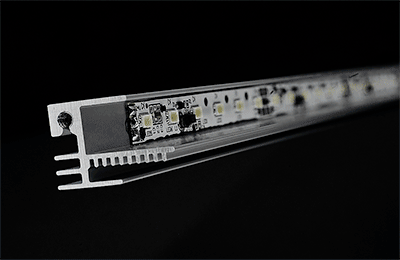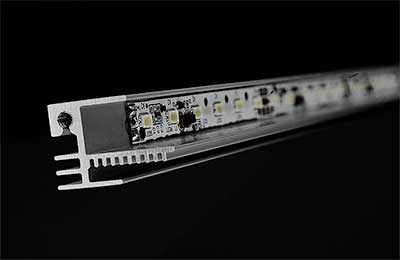
Flat Light Panel Operating Basics
Litegrafx flat light panels use strings of LED lamps positioned along the edge of a clear acrylic plastic sheet which guides the light out of the surface of the panel. The key advantage of using LEDs are high brightness in a compact highly energy efficient package. The diagram below illustrates a typical configuration of a flat light panel.


The key elements of the flat panel LED illumination
The LEDs: The LEDs are mounted on a printed circuit board (PCB) in a long strip. The LEDs are equally separated along the strip with a separation distance of approximately 0.75 inches. Besides the LEDs, special electronic circuitry is included on the PCB to precisely control the current flow to each of the LEDs. This insures uniform brightness of all of the LEDs on each strip. The LED strips are attached to an aluminum extrusion using a special adhesive material.

The key elements of the flat panel LED illumination
The Acrylic Light Guide: The acrylic light guide is used to redirect the light emitting from LEDs to the surface of the light guide. The backside of the acrylic light guide has a special engraved pattern which causes the light to be internally reflected to the front surface of the light.

- The Back Reflector Sheet: The back reflector sheet insures that all of the internal light is directed out the front face of the acrylic light guide.
The key elements of the flat panel LED illumination
The Aluminum Extrusion: The aluminum extrusion serves two primary functions. First it forms the perimeter frame to hold all of the elements of the flat panel light together. The cross sectional shape of the extrusion is designed to form a rigid structure that resists bending and twisting. Secondly the extrusion is the primary means to dissipated heat generated in the LED to the ambient air. Proper heat dissipation is critical to maximize the LED brightness over many years of operation.
